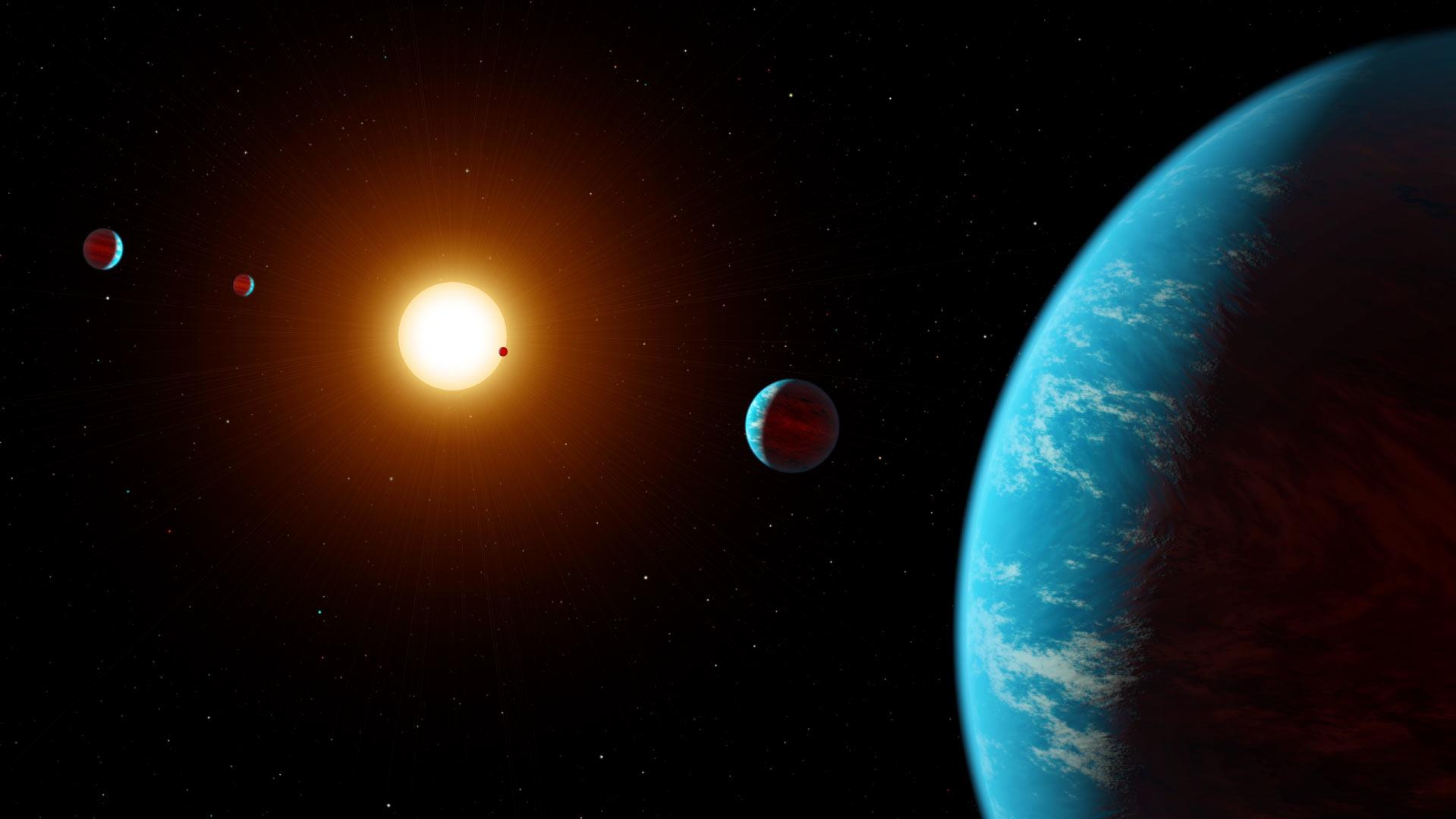According to a statement issued by the American Space Research Organization, NASA, two exoplanets have been discovered with the help of the Hubble and Spitzer space telescopes. The alien planets of the system with the catalog number Kepler-138 are very different from the planets of the solar system.
Especially exoplanets around a red dwarf have been discovered
The distant water planets in the constellation Lant (Lyra) have been discovered as part of NASA’s Exoplanet Research Program. According to a statement from the Space Research Organization, the two unusual celestial bodies orbit a red dwarf located 218 light-years from Earth.
Red dwarfs are relatively small and cool stars with masses ranging from 7.5% to half that of the Sun. (Stars smaller than 7.5 solar masses are called brown dwarfs, a so.) the surface temperature of red dwarfs is less than 3500 K,
Therefore, their light is at most 1/10 of the brightness of the sun,
Most of them can only be detected in the infrared range.

According to a NASA statement, the watery worlds revolving around the red dwarf are not at all like the planets of the solar system of the Earth type.
The natural astronomy According to a study published in the Scientific Journal on December 15, members of the planetary system with catalog number Kepler-138 are made of water and do not have a hard shell.
Strange water worlds, whose thick shell is made of a layer of high-pressure water
The Kepler-138 system was observed by a research group led by Caroline Piaulet of the Institute for Exoplanet Research at the University of Montreal with the help of two NASA space telescopes, Hubble and Spitzer.

The three outer planets of the Kepler-138 system were already known before,
But it was discovered that two of them consist of water.
According to the researchers’ modelling, both planets may have a larger core made of minerals and rock, above which a thick, high-pressure water crust resides.

According to a NASA analysis, higher planetary surface temperatures indicate
Its atmosphere may consist of hot water vapor.
These are the first unusual planets discovered whose mass consists of water. NASA discovered the five thousandth exoplanet this year, and their number rose to more than 5,200 by the end of the year.
Extrasolar planets, or exoplanets for short, are planets orbiting stars other than the solar system.

Since there was no proper technology to discover them for a long time, their existence was hypothetically only until the 1990s. However, thanks to high-performance telescopes and space telescopes, as well as increasingly accurate detection technologies, the number of newly discovered exoplanets continues to increase.












































